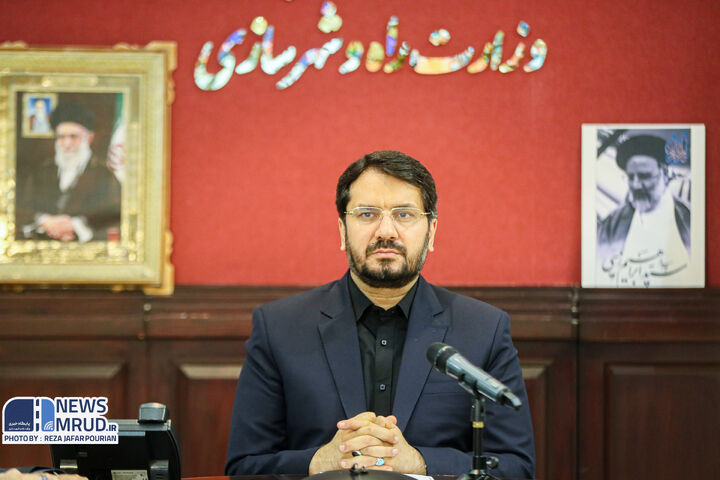Tehran, June 8, 2024 (MRUD NEWS)—The first meeting of BRICS ministers of transport was held in St. Petersburg, Russia, on June 6, 2024. Iran Minister of Roads and Urban Development, Mehrdad Bazrpash attended the meeting via video conference.
Iran officially joined the intergovernmental organization comprising Brazil, Russia, India, China, and South Africa (BRICS) simultaneously with Egypt, Ethiopia, and the United Arab Emirates on January 1, 2024.
In the meeting, Bazrpash considered the official membership of Iran in BRICS as a historic success of Iran's foreign policy. Through this, Iran is expanding communication in all fields of transport, trade, and economy with BRICS members.
Bazarpash further pointed out that BRICS, as a leading institution consisting of large emerging economies, has been able to shape new trends in the world by presenting appropriate models and initiatives, and said: "BRICS members with complementary economies and cultural diversity can meet mutual needs and share their national and local development experiences to strengthen prosperity and global peace. BRICS policies and programs reflected in its statements and documents show that this institution can deal with a diverse range of issues related to the concerns of developing countries".
Pointing to the huge potential of Iran for the BRICS, Bazrpash said that the Islamic Republic of Iran with its privileged geographical location and huge transit advantages at the intersection of North-South and East-West transit corridors has 11 commercial ports on the shores of the Caspian Sea, the Persian Gulf, and the Oman Sea with a capacity of 273 million tons and a network of 15000 kilometers of railway lines and more than 250,000 kilometers of roads and 26 land border terminals. It has the ability to connect regional and international trade networks by land with minimum time and cost and complete the regional value chain in the best way so that 700 million tons of cargo is moved through this network every year.
Transit through the territory of Iran increased by more than 60% in the last 12 months to more than 17.6 million tons, which shows the reliability, security and cost-effectiveness of Iran's transit route for the countries of the region, Bazrpash informed.
In this regard, considering the advantages of the International North-South Transport Corridor (INSTC) which can bring synergy between the BRICS member countries in the field of transport and transit, Iran proposed the formation of an international organization for INSTC to improve the organizational management and international transport within the framework of this corridor. By improving coordination and integration, the idea will promote trade and transit activities between traders by using different modes of transportation via multi-modal transport for the benefit of all BRICS members.
As mentioned in the statement, the Islamic Republic of Iran declared its full support for BRICS to diversify transportation and logistics supply chains to strengthen connectivity and increase efficiency and competition for economic exchanges and growth.
Russia's Minister of Transport who also chaired this meeting, while expressing his sympathy and condolences for the heartbreaking incident of the late President of Iran and his accompanying delegation, welcomed the proposals of Iran regarding the development of the North-South and East-West Corridors and freight transit.
He also pointed to the advantages and transport capacities available in Iran and emphasized the maximum use of these capacities by the BRICS countries.
Noteworthy, in this meeting, a statement on the development of cooperation in the field of transportation was read and approved by the members.
BRICS as a grouping of the world's leading emerging market economies aims to promote peace, security, development, and cooperation.
The key discussion topics in this meeting were development of the transport industry in BRICS countries in the digital era, the establishment of industry-based interaction, as well as the development of interregional and global transport and logistics corridors.
